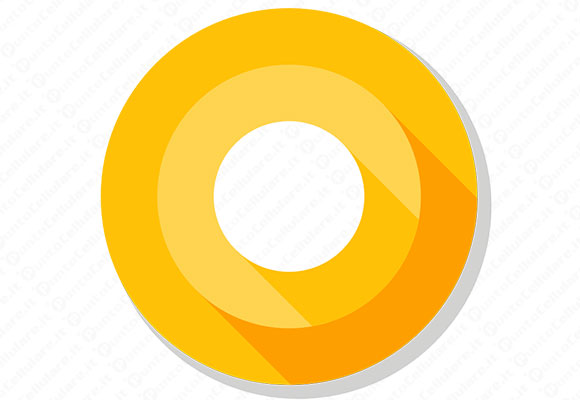
A sorpresa Google ha reso disponibile la prima Developer Preview di Android O, spianando la strada di conseguenza all'arrivo della prossima 'major release' del diffusissimo sistema operativo.

Grazie a questa Developer Preview iniziano si iniziano anche ad abbozzare le novità (documentate dal chenge-log ufficiale pubblicato da Google) che caratterizzeranno Android O e di cui si parlerà in maniera più approfondita al Google I/O del 17-19 maggio.
FACEBOOKSEGUICI SU
TELEGRAMNOTIZIE CORRELATE

Grazie a questa Developer Preview iniziano si iniziano anche ad abbozzare le novità (documentate dal chenge-log ufficiale pubblicato da Google) che caratterizzeranno Android O e di cui si parlerà in maniera più approfondita al Google I/O del 17-19 maggio.
Al momento le ROM con la Developer Preview di Android O sono disponibili per Nexus 5X, Nexus 6P, Google Pixel, Google Pixel XLL, Pixel C e Nexus Player.
Background limits: Building on the work we began in Nougat, Android O puts a big priority on improving a user's battery life and the device's interactive performance. To make this possible, we've put additional automatic limits on what apps can do in the background, in three main areas: implicit broadcasts, background services, and location updates. These changes will make it easier to create apps that have minimal impact on a user's device and battery. Background limits represent a significant change in Android, so we want every developer to get familiar with them. Check out the documentation on background execution limits and background location limits for details.SEGUICI SU
Notification channels - Android O also introduces notification channels, which are new app-defined categories for notification content. Channels let developers give users fine-grained control over different kinds of notifications — users can block or change the behavior of each channel individually, rather than managing all of the app's notifications together. Android O also adds new visuals and grouping to notifications that make it easier for users to see what's going on when they have an incoming message or are glancing at the notification shade.
Autofill APIs - Android users already depend on a range of password managers to autofill login details and repetitive information, which makes setting up new apps or placing transactions easier. Now we are making this work more easily across the ecosystem by adding platform support for autofill. Users can select an autofill app, similar to the way they select a keyboard app. The autofill app stores and secures user data, such as addresses, user names, and even passwords. For apps that want to handle autofill, we're adding new APIs to implement an Autofill service.
PIP - for handsets and new windowing features: Picture in Picture (PIP) display is now available on phones and tablets, so users can continue watching a video while they're answering a chat or hailing a car. Apps can put themselves in PiP mode from the resumed or a pausing state where the system supports it - and you can specify the aspect ratio and a set of custom interactions (such as play/pause). Other new windowing features include a new app overlay window for apps to use instead of system alert window, and multi-display support for launching an activity on a remote display.
Font resources in XML - Fonts are now a fully supported resource type in Android O. Apps can now use fonts in XML layouts as well as define font families in XML — declaring the font style and weight along with the font files.
Adaptive icons - To help you integrate better with the device UI, you can now create adaptive icons that the system displays in different shapes, based on a mask selected by the device. The system also animates interactions with the icons, and uses them in the launcher, shortcuts, Settings, sharing dialogs, and in the overview screen.
Wide-gamut color for apps - Android developers of imaging apps can now take advantage of new devices that have a wide-gamut color capable display. To display wide gamut images, apps will need to enable a flag in their manifest (per activity) and load bitmaps with an embedded wide color profile (AdobeRGB, Pro Photo RGB, DCI-P3, etc.).
Connectivity - For the ultimate in audio fidelity, Android O now also supports high-quality Bluetooth audio codecs such as LDAC codec. We're also adding new Wi-Fi features as well, like Wi-Fi Aware, previously known as Neighbor Awareness Networking (NAN). On devices with the appropriate hardware, apps and nearby devices can discover and communicate over Wi-Fi without an Internet access point. We're working with our hardware partners to bring Wi-Fi Aware technology to devices as soon as possible.
The Telecom framework is extending ConnectionService APIs to enable third party calling apps integrate with System UI and operate seamlessly with other audio apps. For instance, apps can have their calls displayed and controlled in different kinds of UIs such as car head units.
Keyboard navigation - With the advent of Google Play apps on Chrome OS and other large form factors, we're seeing a resurgence of keyboard navigation use within these apps. In Android O we focused on building a more reliable, predictable model for "arrow" and "tab" navigation that aids both developers and end users.
AAudio API for Pro Audio - AAudio is a new native API that's designed specifically for apps that require high-performance, low-latency audio. Apps using AAudio read and write data via streams. In the Developer Preview we're releasing an early version of this new API to get your feedback.
WebView enhancements - In Android Nougat we introduced an optional multiprocess mode for WebView that moved the handling of web content into an isolated process. In Android O, we're enabling multiprocess mode by default and adding an API to let your app handle errors and crashes, for enhanced security and improved app stability. As a further security measure, you can now opt in your app's WebView objects to verify URLs through Google Safe Browsing.
Java 8 Language APIs and runtime optimizations - Android now supports several new Java Language APIs, including the new java.time API. In addition, the Android Runtime is faster than ever before, with improvements of up to 2x on some application benchmarks.
Partner platform contributions - Hardware manufacturers and silicon partners have accelerated fixes and enhancements to the Android platform in the O release. For example, Sony has contributed more than 30 feature enhancements including the LDAC codec and 250 bug fixes to Android O.
FACEBOOKSEGUICI SU
TELEGRAMNOTIZIE CORRELATE
![Google IO]() Google I/O - al via le registrazioni per l'evento Google ha attivato le iscrizioni per l'edizione 2017 della Google I/O, ogni anno il più importante appuntamento per l'ecosistema che ruota attorno al mondo Android ... [23/02/2017]
Google I/O - al via le registrazioni per l'evento Google ha attivato le iscrizioni per l'edizione 2017 della Google I/O, ogni anno il più importante appuntamento per l'ecosistema che ruota attorno al mondo Android ... [23/02/2017]![Google IO 2017]() Google I/O - svelata la data in cui si terrà l'edizione 2017 L'edizione 2017 di Google I/O, ogni anno l'appuntamento più importante per il mondo Android, si terrà quest'anno dal 17 al 19 maggio, presso lo Shoreline Amphitheatre di Mountain View ... [26/01/2017]
Google I/O - svelata la data in cui si terrà l'edizione 2017 L'edizione 2017 di Google I/O, ogni anno l'appuntamento più importante per il mondo Android, si terrà quest'anno dal 17 al 19 maggio, presso lo Shoreline Amphitheatre di Mountain View ... [26/01/2017]
ULTIME NOTIZIE
 Xiaomi Mix Flip - in arrivo a fine mese, in anteprima nuove immagini
Xiaomi Mix Flip - in arrivo a fine mese, in anteprima nuove immagini Realme GT6 - una dotazione differente per la versione per il mercato della Cina
Realme GT6 - una dotazione differente per la versione per il mercato della Cina Redmi 13 5G - nuovo smartphone con Snapdragon 4 Gen 2 e fotocamera da 108MP
Redmi 13 5G - nuovo smartphone con Snapdragon 4 Gen 2 e fotocamera da 108MP Oppo lancia i nuovi Reno 12 F 5G e Reno 12 FS 5G in Italia
Oppo lancia i nuovi Reno 12 F 5G e Reno 12 FS 5G in Italia OnePlus svela nuovi dettagli sulle novità in arrivo il 16 luglio
OnePlus svela nuovi dettagli sulle novità in arrivo il 16 luglio Vodafone - insieme a Meta per ottimizzare l'efficienza della rete
Vodafone - insieme a Meta per ottimizzare l'efficienza della rete Nothing CMF Phone 1 - lo smartphone 5G economico con retro personalizzabile
Nothing CMF Phone 1 - lo smartphone 5G economico con retro personalizzabile OnePlus svela la gamma di prodotti per il Summer Launch Event del 16 luglio
OnePlus svela la gamma di prodotti per il Summer Launch Event del 16 luglio Realme C61 - ufficiale il nuovo entry-level con resistenza a polvere e acqua IP54
Realme C61 - ufficiale il nuovo entry-level con resistenza a polvere e acqua IP54 Vivo Y28s 5G - ufficiale il nuovo smartphone di fascia media
Vivo Y28s 5G - ufficiale il nuovo smartphone di fascia media Realme 12 4G - chip Snapdragon 685 e schermo OLED per la nuova variante senza 5G
Realme 12 4G - chip Snapdragon 685 e schermo OLED per la nuova variante senza 5G Apple estende il software di diagnostica Self Service Repair in Europa
Apple estende il software di diagnostica Self Service Repair in Europa Google I/O - al via le registrazioni per l'evento Google ha attivato le iscrizioni per l'edizione 2017 della Google I/O, ogni anno il più importante appuntamento per l'ecosistema che ruota attorno al mondo Android ...
Google I/O - al via le registrazioni per l'evento Google ha attivato le iscrizioni per l'edizione 2017 della Google I/O, ogni anno il più importante appuntamento per l'ecosistema che ruota attorno al mondo Android ...  Google I/O - svelata la data in cui si terrà l'edizione 2017 L'edizione 2017 di Google I/O, ogni anno l'appuntamento più importante per il mondo Android, si terrà quest'anno dal 17 al 19 maggio, presso lo Shoreline Amphitheatre di Mountain View ...
Google I/O - svelata la data in cui si terrà l'edizione 2017 L'edizione 2017 di Google I/O, ogni anno l'appuntamento più importante per il mondo Android, si terrà quest'anno dal 17 al 19 maggio, presso lo Shoreline Amphitheatre di Mountain View ...